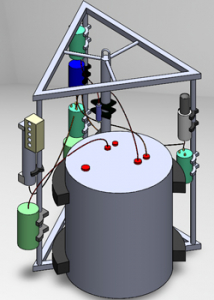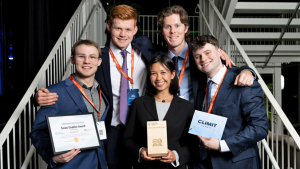
A team of five students, including University of Hawaiʻi at Mānoa oceanography graduate student Cameron Richardson, won one of three top prizes of $10,000 at an international pitch competition focused on approaches for removing carbon dioxide from the atmosphere.

The student group, which also includes three students from Dalhousie University and one from Acadia University, represented Canada and the U.S. in the Mission Innovation SMART Carbon Dioxide Removal Mission competition during the 2025 CLIMIT Summit in Larvik, Norway.
“The competition provided an invaluable professional development opportunity for our entire team, and allowed me to make meaningful international connections in the carbon dioxide removal sector, an industry I am considering working in after my graduate research,” said Richardson.
Equlantic Aquatic Monitoring Inc., the new startup founded by the student group, aims to improve monitoring of carbon dioxide removal in marine environments. The students were chosen from a pool of more than 100 other teams as finalists to make their pitch in Larvik, Norway.
Innovations in monitoring carbon dioxide removal

In an effort to combat rising levels of CO₂, researchers and industry leaders are looking for ways to actively reduce carbon levels in the atmosphere. Among the approaches is marine carbon dioxide removal, wherein carbon from the atmosphere is transformed and sequestered in the deep sea. Along with innovations that prompt carbon sequestration, scientists are developing new ways to assess and monitor the effectiveness of these approaches.
The Equlantic team designed a sensor package that measures ocean-based water quality, specifically the marine carbonate system. Their design, called the Auto-Spec Carbon Analyzer, integrates commercially-available sensors that measure pH, temperature, salinity and carbonate.
“Our device, now patent pending in Canada, can reduce uncertainty in our understanding of the carbonate system in areas undergoing various stages of marine carbon dioxide removal,” said Richardson. “The device also autonomously collects water samples, which can be processed in the laboratory with traditional methods afterward for validation of the autonomous sensor measurements.”
As finalists in the competition, they made a seven-minute presentation to an audience of carbon-management leaders. Equlantic feels optimistic about the market potential for the project. They are now trying to make this concept a reality, having secured additional funding to develop a prototype this coming summer.
See the entire story on the School of Ocean and Earth Science and Technology website.

